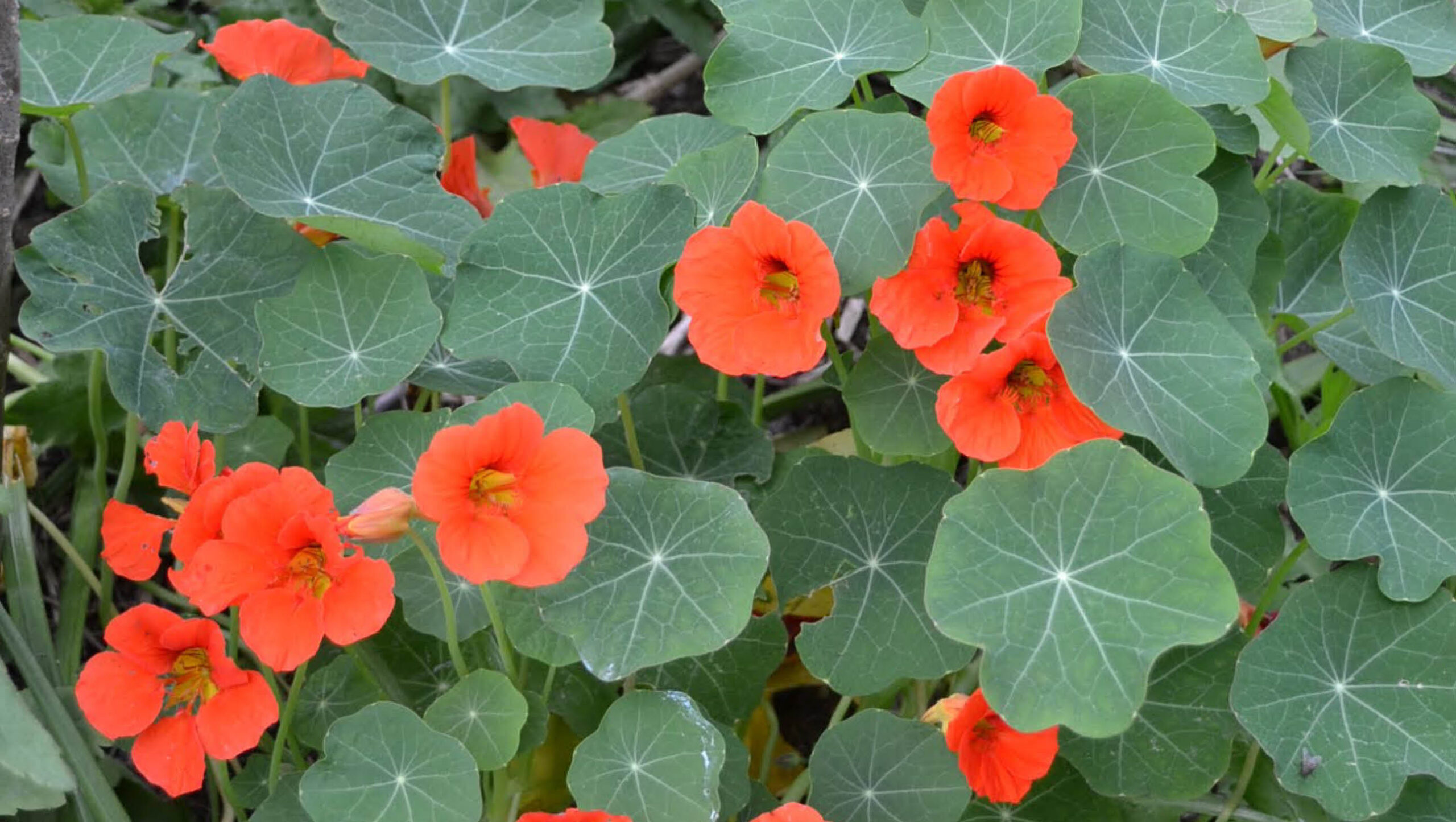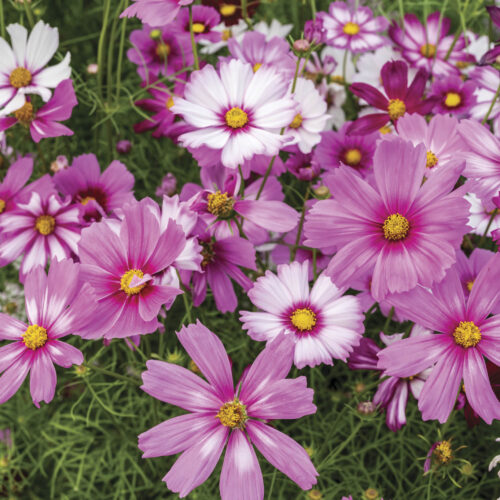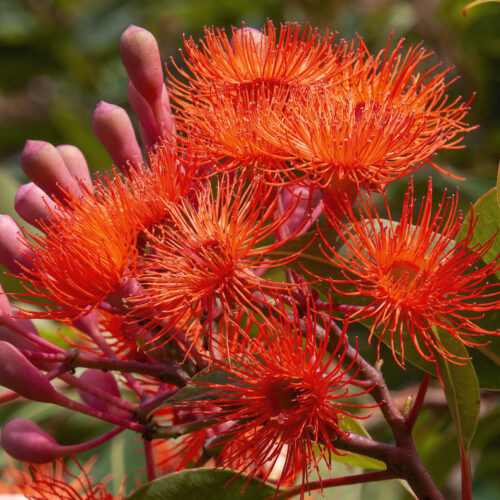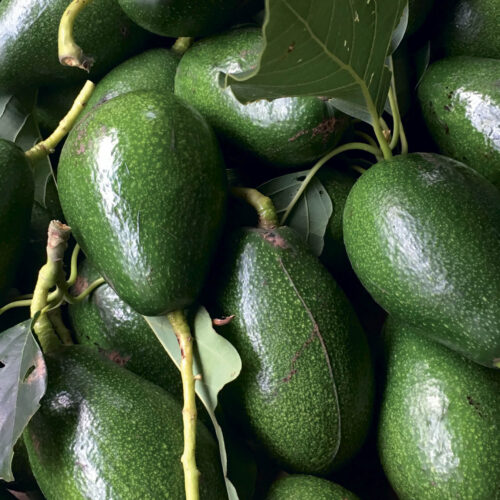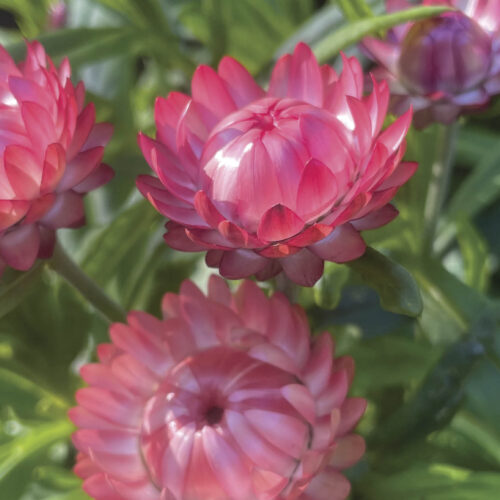Grow nasturtiums
2024-09-23T11:07:45+10:00
Nasturtiums are one of the easiest multi-function plants you can grow, writes Jian Liu – a bright addition to any space.
As soon as the weather begins to cool, nasturtiums (Tropaeolum majus) burst back into life in our garden and provide us with a lush green ground cover, with bright and cheerful flowers all winter and spring. In areas with heavy frosts, yours may not get going until the weather warms a little – but rest-assured these prolific self-seeders will reliably make an appearance each year.
Nasturtiums are one of the easiest multi-function plants you can grow. They are not just a pretty face but have a myriad of uses. Here are some of our favourite ways to use them in the kitchen and garden:
1. Did you know that all parts of the plant are edible? Nasturtium leaves and stems have a strong mustardy taste. When used sparingly, they make a great peppery addition to a garden salad or in a sandwich. The leaves can also be used to make a zingy pesto. The flower petals can be sprinkled on top of dishes or cakes as a colourful garnish.
2. A great way to use up the abundant crinkly green seeds nasturtiums produce is as a ‘poor man’s caper’. When raw, the seeds are too strong and not particularly appealing; but pickle them in vinegar or brine and they come to life, resembling the strong punchy flavour of real capers. They make a wonderful addition to pasta sauces and pizzas.
3. Nasturtiums are a tasty treat for your backyard chickens. They are a powerhouse of nutrients, being high in vitamin A, C, as well as containing potassium and iron. Studies have shown that nasturtium acts as a natural antibiotic and helps to prevent bacterial infections in your flock. Supplementing your chooks with leafy greens also produces richer golden egg yolks.
4. In the garden, nasturtiums make a wonderful ground cover under fruit trees. Being fast growing, shade tolerant, and shallow rooted, they will quickly create a dense living mulch to protect the soil beneath your orchard.
5. Nasturtiums can be a useful companion plant in your veggie patch. Planted along the border of your patch, they can attract caterpillars away from your veggies. They are also said to repel aphids, white flies and other pests with their scent.
6. Nasturtium flowers come in many colours ranging from bright oranges, yellows and reds to pastel creams and peaches. They add so much colour to the garden as well as attract bees to pollinate your fruit trees, and provide nectar for beneficial insects such as ladybirds, hoverflies and parasitic wasps.
7. Last, but not least, nasturtiums can literally help you improve your soil. They are so fast growing that they can be used as a green manure. When ours get out of control, we simply chop and drop the leaves onto the soil to add back valuable nutrients and organic matter. They can also be added to the compost for a nitrogen rich boost and accelerate the composting process.
You can follow Jian Liu @melbourne.foodforest. She’s a regular contributor to OG, using her experience in her own suburban backyard as a basis for her features, including ‘Choosing a chook house’ , ‘What is a food forest’, ‘Pumpkins: the all-season survival food’ and ‘Pepino: a year-round rockmelon’.

